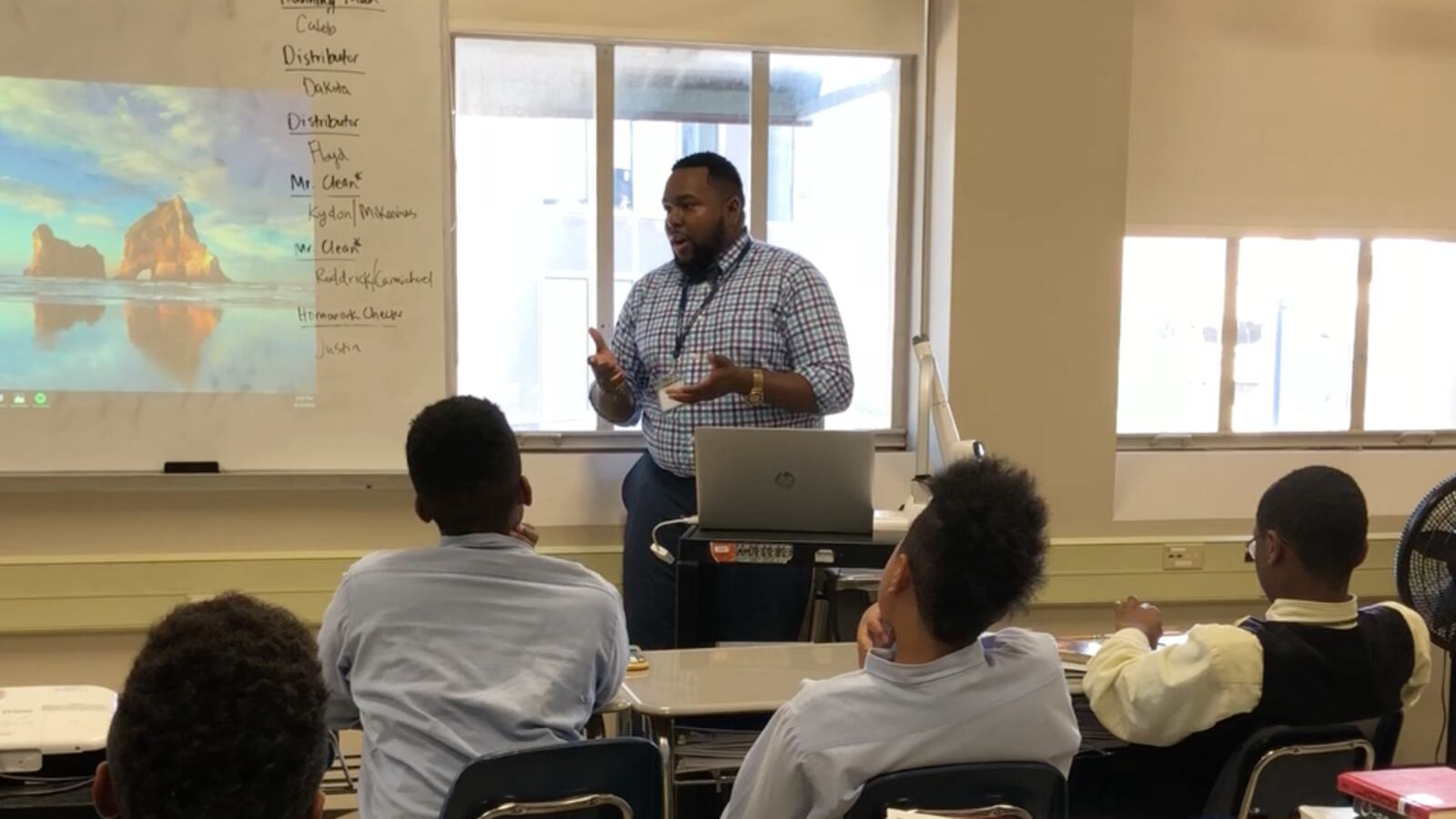Despite months of heated debate, Indiana House Republicans are not setting aside extra dollars for meaningful teacher raises in their version of the state’s $14.5 billion education budget plan released Monday night.
Even though lawmakers are proposing preserving a controversial merit-based bonus pool and adding small amounts for teacher training programs, their budget draft would largely leave it up to school districts to dole out raises through increased overall funding.
The budget draft proposes increasing what Indiana spends on schools overall by $461 million — or 4.3 percent — through 2021, a little more than increases in years past. The basic per-student funding that all districts get would jump from $5,352 per student this year to $5,442 per student in 2020 and $5,549 per student in 2021. House lawmakers are also adding in a one-time payment of $150 million from state reserves that would pay down a pension liability for schools. But while lawmakers and Gov. Eric Holcomb have said that pension payment would free up about $70 million in schools’ budgets each year, the state likely wouldn’t require the cost-savings be passed along to teachers.
Although increasing teacher pay is a top goal for House Republicans, lawmakers have crafted bills that hinge on districts spending less money in areas such as administration or transportation rather than adding more money to school budgets and earmarking it for teacher salaries.
Their criticism of school spending has raised the ire of superintendents and educators who say they have little left to cut after years of increasing costs and state revenue that has barely kept pace with inflation.
But budget draft, which is expected to be presented to and voted on by the House Ways and Means Committee on Tuesday, doesn’t completely omit efforts to incentivize teachers to stick around. Unlike Holcomb’s budget proposal, House lawmakers are keeping in the current appropriation of $30 million per year for teacher bonuses.
The House budget draft would also set aside $1 million over two years for a teacher residency pilot program and $5 million over two years for schools that put in place career ladder programs that allow teachers to gain skills and opportunities without leaving the classroom.
Teacher advocacy groups, such as the Indiana State Teachers Association and Teach Plus, have been supportive of residency and career ladder programs, but the organizations have also called for more action this year to get dollars to teachers. Additionally, the ideas aren’t new — similar programs have been proposed in years past.
Calls for the hundreds of millions of dollars it would take to raise teacher salaries to be more in line with surrounding states will likely go unheeded for now as the state instead prioritizes other high-profile and expensive agencies, such as the Department of Child Services and Medicaid.
But while plans for major teacher pay raises appear to be on hold, House lawmakers are looking to boost funding in other areas of education to support some of the state’s most vulnerable students.
The budget draft would increase what the state must spend on preschool programs for students with disabilities from the current $2,750 per-student to $2,875 in 2020 and $3,000 in 2021 — the first such increase in more than 25 years.
House lawmakers are also proposing the state spend more money on students learning English as a new language, at $325 per student up from $300 per student now. While all schools with English learners would receive more money per student under this plan, the new budget draft removes a provision that had previously allocated extra dollars to schools with higher concentrations of English learners.
A 2017 calculation error and an uptick in interested schools meant state lawmakers did not budget enough money for schools with larger shares of English-learners in the last budget cycle, so they ended up getting far less than what the state had promised. But even the small increases were valuable, educators told Chalkbeat.
House lawmakers also suggested slashing funding for virtual programs run by traditional public school districts. Going forward, funding for both virtual charter schools and virtual schools within school districts would come in at 90 percent of what traditional schools receive from the state — now, only virtual charter schools are at the 90 percent level. It’s a marked change for House lawmakers, who in years past have asked that virtual charter school funding be increased to 100 percent.
The virtual funding proposal comes as lawmakers are considering bills that would add regulations for the troubled schools, where few students pass state exams or graduate.
The budget draft also includes:
- $5 million per year added to school safety grants, totaling $19 million in 2020 and $24 million in 2021
- Doubling grants for high-performing charter schools from $500 per student to $1,000 per student, at a cost of about $32 million over two years. The money is a way for charter schools to make up for not receiving local property tax dollars like district schools, lawmakers say.
- $4 million per year more to expand the state’s private school voucher program to increase funding for certain families above the poverty line. Under the plan, a family of four making between $46,000 and $58,000 annually could receive a voucher for 70 percent of what public schools would have received in state funding for the student. Currently, those families receive a 50 percent voucher.
- About $33 million over two years (up from about $25 million) for the state’s Tax Credit Scholarship program.


